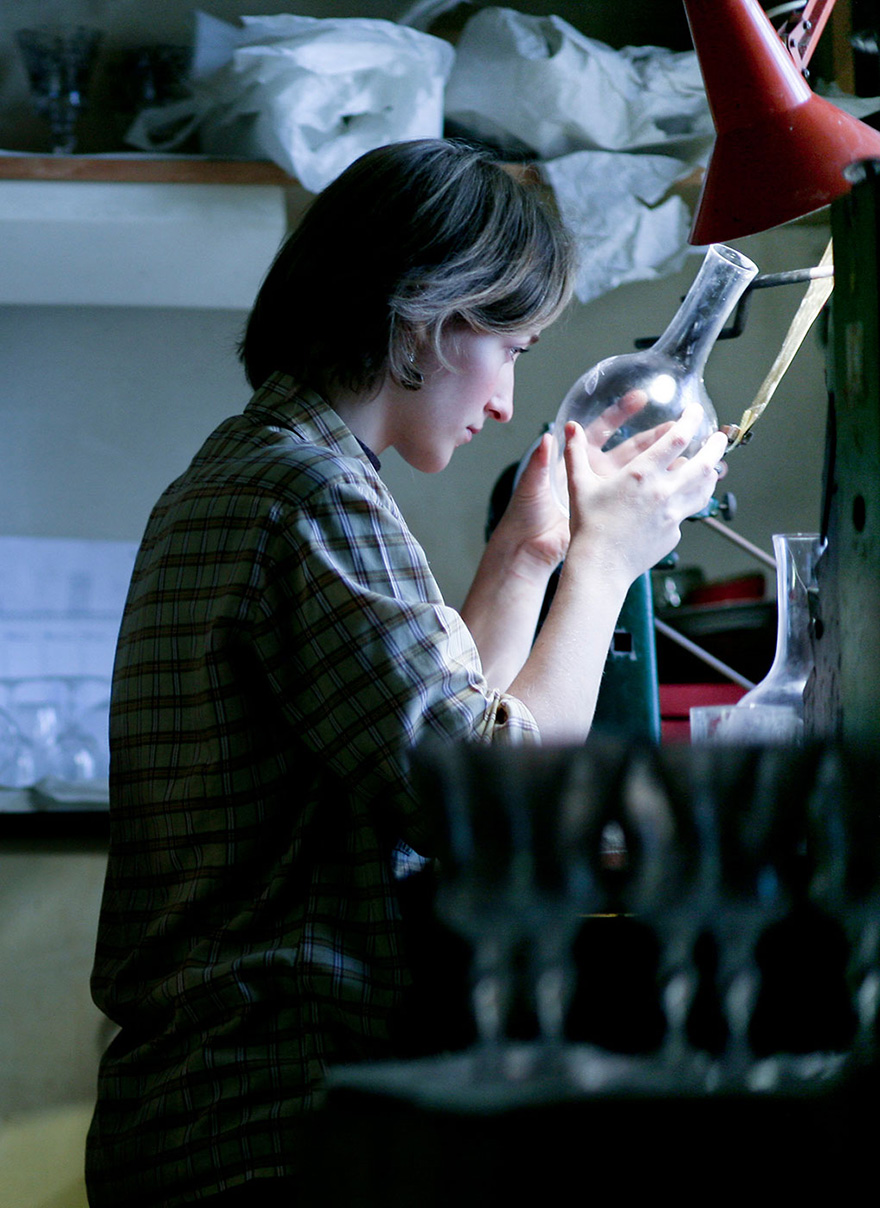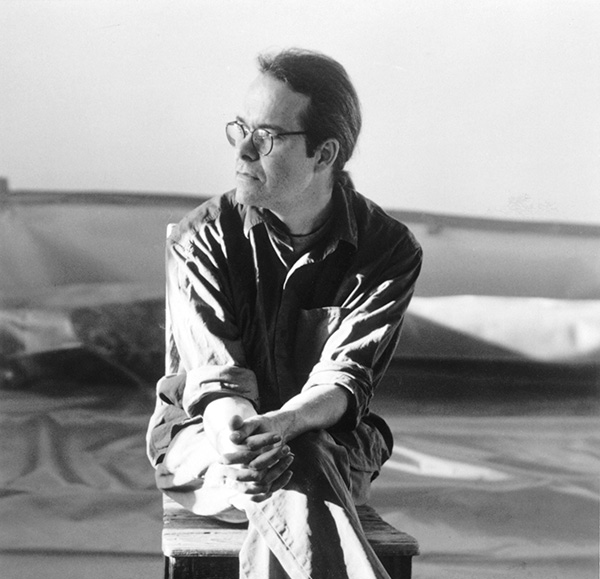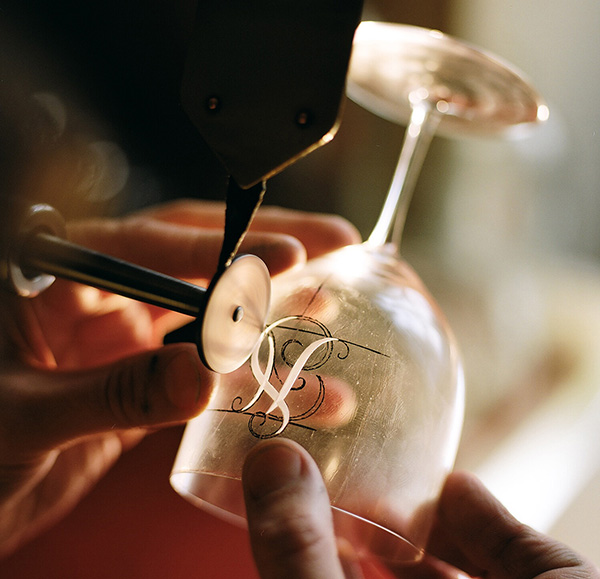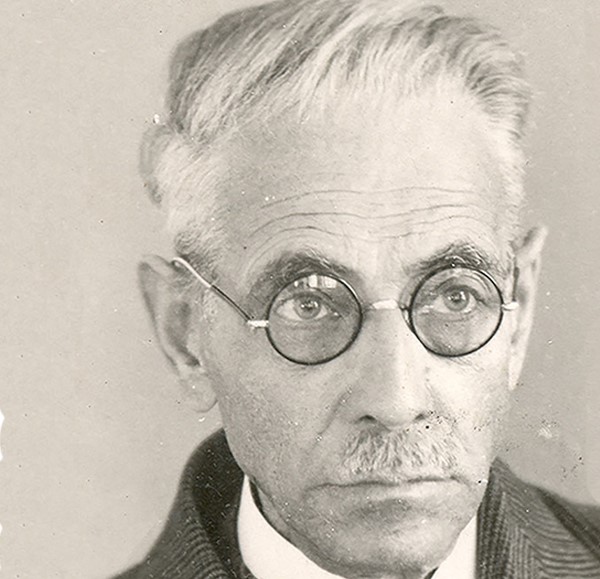
Login
NEW CUSTOMERS
By creating an account with our store, you will be able to move through the checkout process faster, store multiple shipping addresses, view and track your orders in your account and more.
CREATE AN ACCOUNTSEARCH
Shopping cart
Copper Wheel Engraving
Crafting
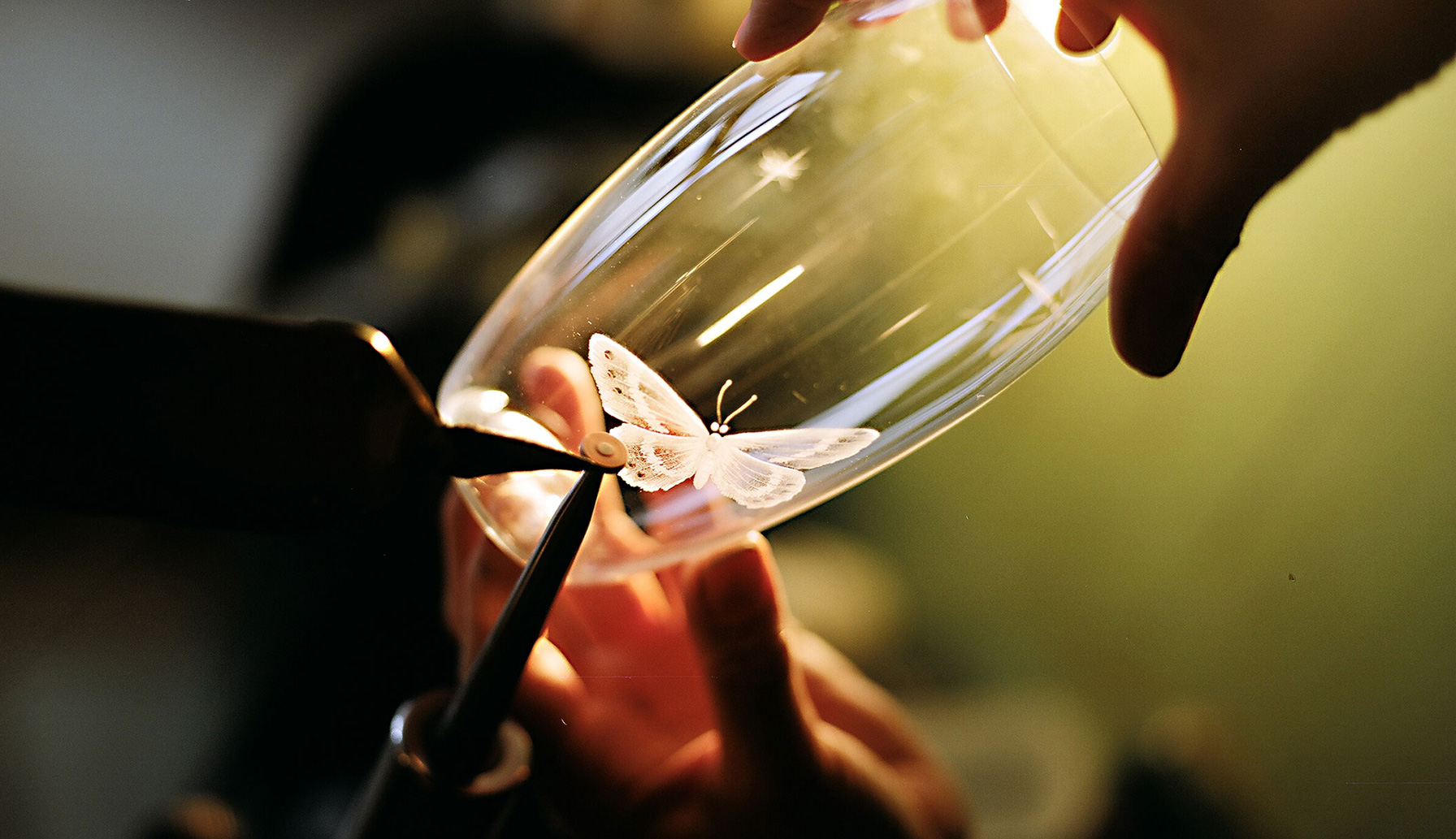
The ultimate discipline of glass decoration is copper wheel engraving, in which an abrasive is applied to the edge of a rotating copper wheel and the glass pressed against it.
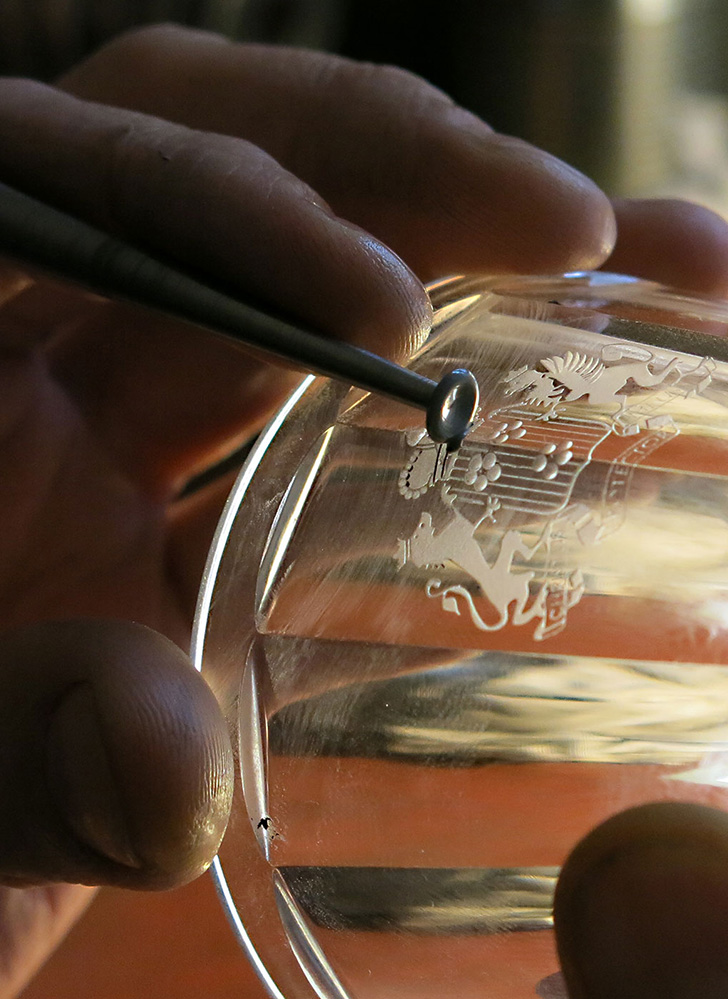
Traditional Craftsmanship
Copper wheel engraving makes an infinite repertoire of designs possible, right down to the finest of details. The engraver works with copper wheels of various sizes that are vertically riveted onto rotating spindles. Copper is soft and does not cut into the hard glass, which is done by the abrasion of the carborundum emery, repeatedly applied to the spinning wheels by the engraver. The basic design is drawn on the glass, usually with Indian ink protected by shellac. A gifted and experienced engraver can create any shading and pattern by varying the rim profile and size of the disk, rotational speed, abrasive grain, and arrangement of cuts.
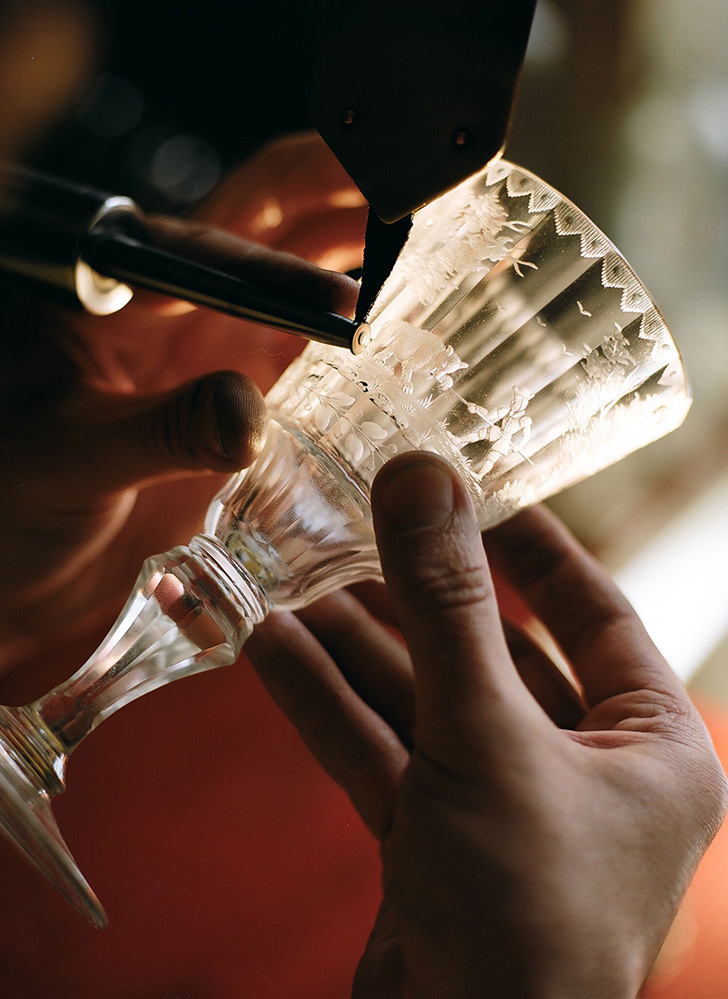
The hard grains of the carborundum abrasive dig into the soft copper and remove material from the glass surface. Over time, an experienced glass engraver is able to achieve fine and elegant results. Lobmeyr engravings range from simple monograms to fine ornamentation and true masterpieces.
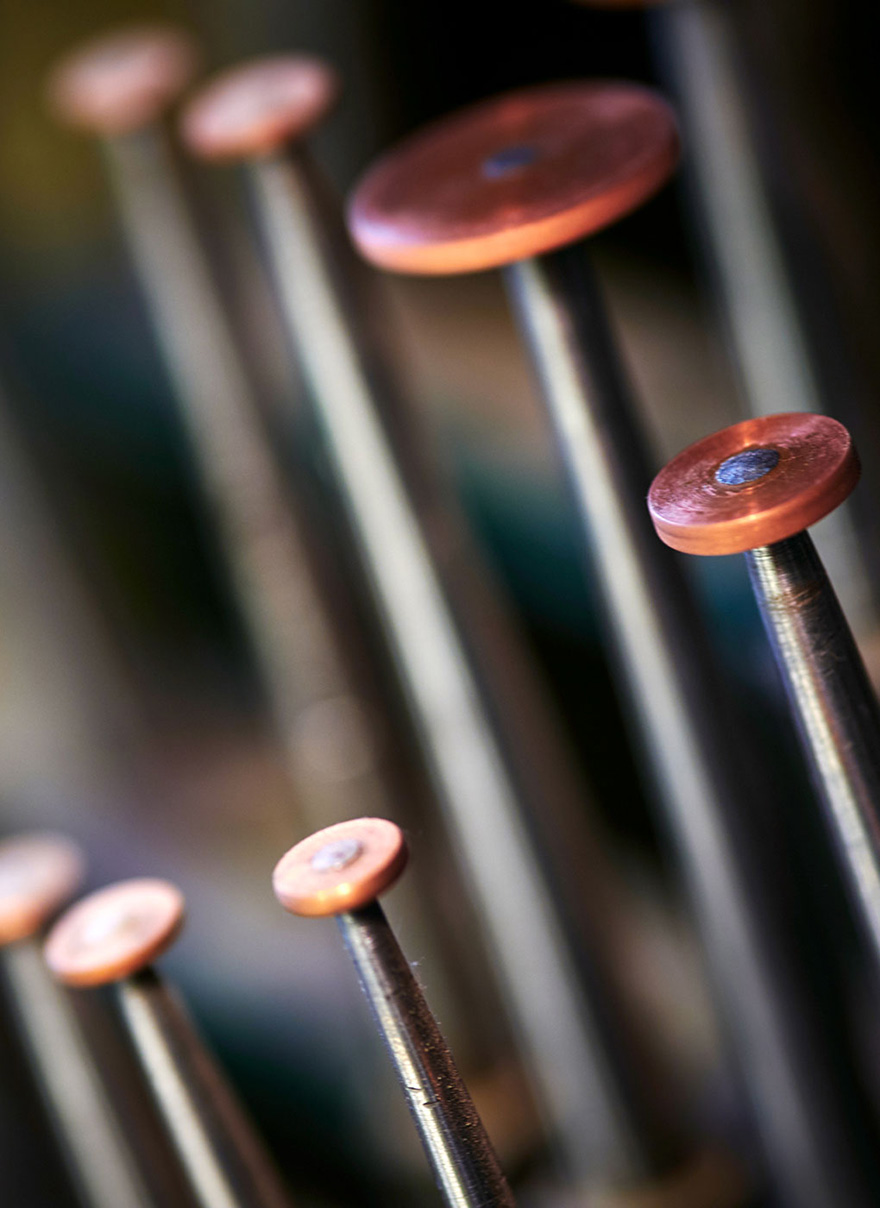
“Painting” in Glass
An engraving design must be translated into the existing “vocabulary” of the copper wheel profiles. If a required profile is not available, the craftsperson will lathe a new wheel. Wheels are sometimes made of corundum, and diamond-set tools are also used. The copper wheel has the advantage of making it possible to adapt the tool to the design and not the other way around. In addition, it creates the finest possible surface and a sense of liveliness and depth akin to a “painting” within the glass.
For geometric drawings such as logos, however, the less labour-intensive engraving technique of sandblasting, which uses photo-developed stencils, is also quite suitable. Sandblasting can also be used in combination with more classic techniques.
Up to 1000 Hours of Engraving
This traditional craft, which has become a rarity, takes time: A single engraved letter takes an average of an hour to create, and complex motifs requiring well over a thousand hours of work are not unheard-of. In addition to time, the craft also requires an exceptionally steady hand, a sense of proportion, and artistic talent.
